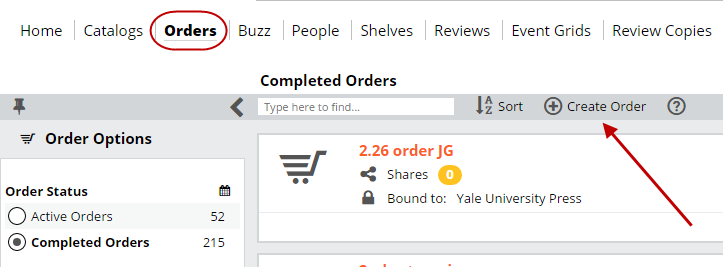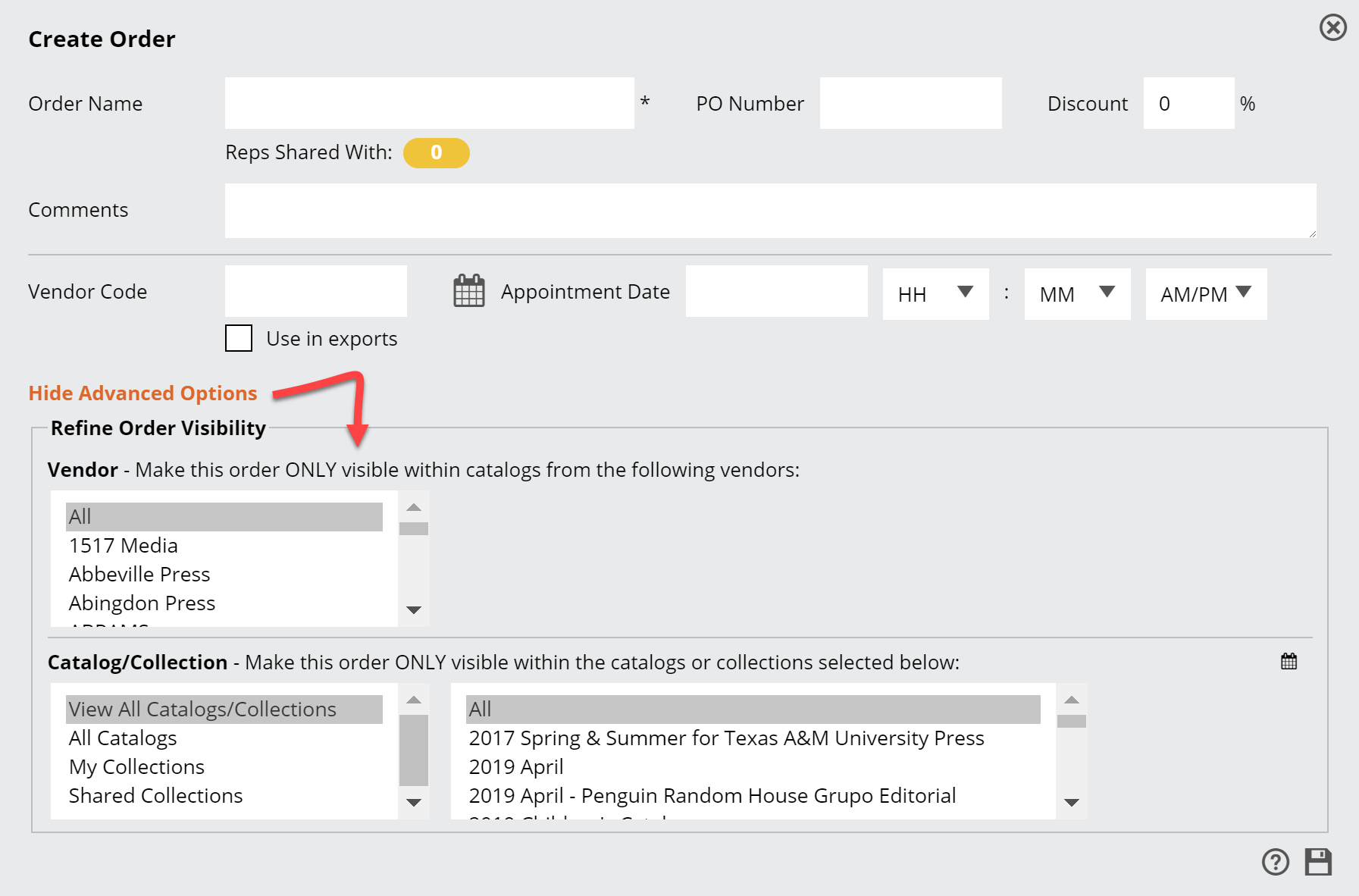Your account will need Buying Privileges to create and edit orders in Edelweiss.
While viewing a Catalog, Collection, or simply a list of titles, you can create an order at the very bottom of the screen. Your order bar may be minimized, in which case you’ll see this:
Simply click on the shopping cart icon to expand this tool. Click on the same icon again to shrink this back down if you’re looking at titles but not necessarily working on orders, if you like.
Once expanded, you’ll see your current Selected Order, a Location selector, and a running total of this order, including total titles, units and the gross dollar amount you’ve ‘spent.’
Selecting or de-selecting a location will change the running totals based on orders made for that/those location(s).
Click on the name of the order to bring up a list of the possible Active Orders you can use. Select an active order to work with by checking the box:
Or click one of these two + icons to create a new order:
Note: You’ll also find a Create Order link at the top of your Orders page:
That will bring up the Create Order box. This box gives you lots of options for setting up your Orders. Below, we’ll discuss the different fields and provide a few best practices where relevant.
Order Name is where you name your order. Lots of places use their own special codes to delineate publisher, season, sales rep, etc. That’s great and works just fine, of course. Otherwise, you’ll simply want to be sure to name the order as clearly as possible. “HarperCollins Kids Summer 2019” is nice and clear and you can tell at a glance what that order is for. “Summer” is much less clear, considering you’re likely placing multiple summer season orders for multiple publishers, not to mention the fact that you might get confused between past and future summer season orders as well. Taking a couple of extra seconds here will save you some confusion later on.
Reps Shared With: This allows you to share your order with a specific sales rep. They will not see your order until you share it with them. You do not have to share it immediately, as you’re creating the order, but you’ll want to be sure and do so once you’re finished with the order if you don’t do it here. Clicking on the yellow icon will pull up a list of reps that currently have you listed in their Contacts. Simply select one (or more) with whom you’d like to share your order. Note, this is different from old Edelweiss in that it gives you ultimate control over who sees your order when.
PO Number is where you can add a PO number from your POS system, or something that you just make up, or however you might work. You may not have a PO number until you import this order into your POS system, so you may end up leaving this field blank for now and adding the number in later.
Discount is where you can add the discount you receive from this publisher. Some POS systems require this information, or simply provide a field for it. Edelweiss will not calculate your discounted prices.
Comments is simply a field in which you can make notes about this order. Some stores indicate here that an order has been imported into their systems, or they make a note about their sales meeting (The rep brings pastries so don’t eat breakfast, Meeting at a coffee shop, etc.) Whatever information will help you be prepared is relevant here.
Vendor Code is a field in which you can add a specific POS code to the vendor field. This will override any sort of title-level or even macro-level field mappings you’ve done if you also check the Use in exports box.
Appointment Date allows you to note when you’ve set an appointment to review this order with a sales rep. Some users use this religiously to help them keep track of their buying appointments, others do not.
Show Advanced Options
The Refine Order Visibility area allows you to make this order visible only when viewing catalogs from certain publishers, or even only when viewing certain catalogs or Collections.
Vendor allows you to select a publisher to whom you can “bind” this order, meaning if you select HarperCollins in this list, you’ll only be able to add titles from HarperCollins to this order.
*Note, you do not have to order directly through the publisher if that’s not how you do things. You can always create a wholesale order if you like. In that case, you would want to not share your order with a rep, to avoid any confusion on that end. Also, selecting All for your Vendor in this field means you’ll be able to add any books from any publisher to this order.
Catalog/Collection allows you to bind this order to a specific catalog or collection to avoid any sort of “cross-contamination” of your orders. Specifically, this can be helpful when ordering Random House Blue versus Random House Green, for example.
Note that there is a calendar icon here. This allows you to set how far back the list of catalogs will go. So rather than showing every catalog ever listed, it will show all catalogs added to the site within the last __ months or years:
Don’t forget to save!
You’ll now be able to order titles using this new order:
See all this in a short video here:












